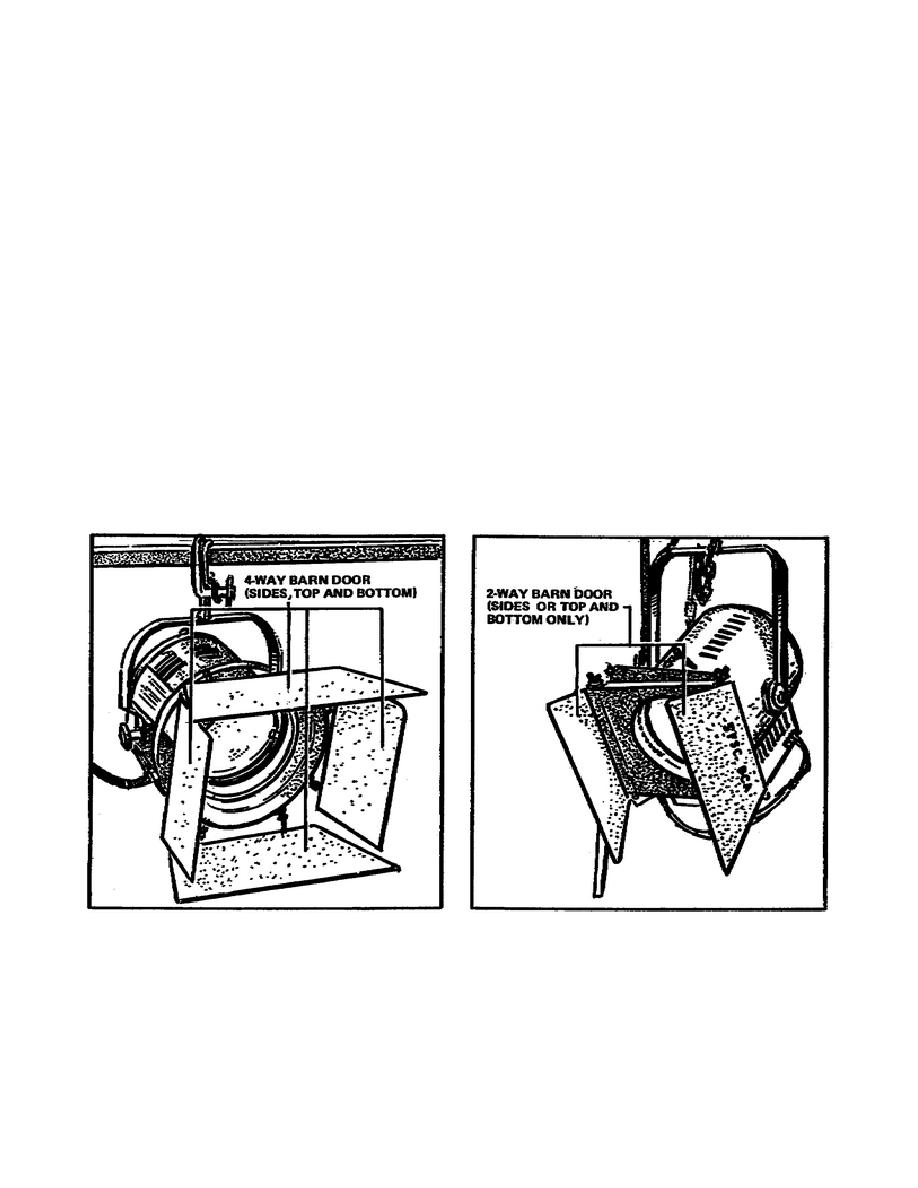
b. Another type of floodlight, which acts as a series of scoops, is known
as the broad.
Broads illuminate a rather large area evenly with diffused
light. When using broads for fill light, it is usually possible to adjust the
beam of light either through the use of barn doors or with an adjustable beam,
something like the fresnel spot.
c. The last type of studio floodlight we will discuss is the strip, or
"cyc" light.
This type of lighting instrument is used to achieve even
illumination of large set areas. The strip light consists of rows of three to
twelve incandescent or quartz lamps mounted in long, boxlike reflectors. Strip
lights are often used for silhouette lighting, when the background must be
evenly illuminated while foreground set pieces remain unlit.
4. Even though many lighting instruments have directional controls for the
light beam, it is often necessary to control the direction of the beam beyond
these controls. Because of this, several other devices are used to assist you.
The first of these devices that we will discuss are known as the barn doors.
a. Barn doors (fig 1-10) are extremely effective when it is necessary to
block certain set areas, either partially or totally, from illumination. For
example, if it is necessary to keep the upper part of some scenery dark, while
illuminating the lower part of that same scenery, you could simply "barn door"
the upper half of the beam.
Barn doors are also important for blocking the
back light from shining into the camera lens, causing lens flare.
Figure 1-10.
Barn doors
13



 Previous Page
Previous Page
